Table of Contents
Overview – Hormones and Receptors
Hormones and receptors are the cornerstone of endocrine system function, regulating critical physiological processes via precise chemical signalling. Understanding hormones and receptors is essential for diagnosing and managing a wide range of endocrine disorders seen in clinical practice. This article explores the classifications, synthesis, receptor interactions, and regulatory mechanisms of hormones and receptors, providing a high-yield resource for final-year medical students.
Definition
- Endocrinology is the scientific study of hormones (chemical messengers) and the endocrine organs.
- The endocrine system plays a key role in maintaining homeostasis through hormonal signalling.
- Hormones are chemical signalling molecules secreted by endocrine glands into extracellular fluids, traveling via blood or lymph to distant target cells.
- Biological specificity: hormones exert effects only on cells with specific receptors.
Classification of Hormones
Steroid Hormones (Lipid-Soluble)
- Derived from cholesterol.
- Sex hormones: Testosterone (androgens), oestrogens, progestogens.
- Adrenal hormones: Glucocorticoids (e.g. cortisol), mineralocorticoids (e.g. aldosterone).
Non-Steroid Hormones
- Amino Acid Derivatives:
- Catecholamines (adrenaline, noradrenaline, dopamine) – derived from tyrosine.
- Thyroid hormones – derived from tyrosine.
- Histamine – derived from histidine.
- Proteins: All pituitary hormones.
- Fatty-Acid Derivatives: Prostaglandins, thromboxanes.
- Purines: Adenosine.
- Dissolved Gases: Nitric oxide.
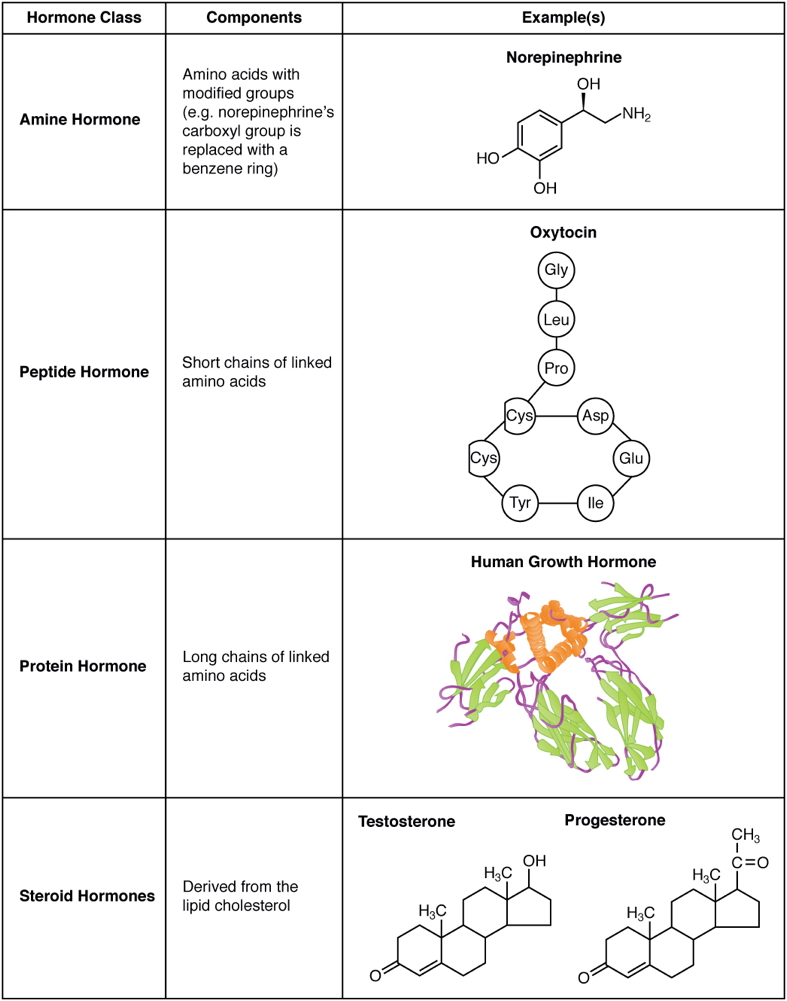
Synthesis of Chemical Messengers
Steroidogenesis
- All steroid hormones originate from cholesterol.
- Five major families:
- Progestogens (progesterone)
- Androgens (testosterone)
- Mineralocorticoids (aldosterone)
- Glucocorticoids (cortisol)
- Oestrogens (oestrogen)
Protein/Peptide Hormone Synthesis
- Initially synthesised as pre-prohormones.
- Cleaved into prohormones, then into active hormones.
- Example: Insulin.
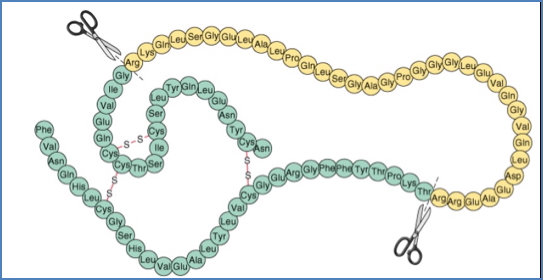
Mechanisms of Hormone Action
Biological Properties
- Biological Specificity: Hormones bind specific receptors.
- Affinity: Strength of hormone-receptor binding.
- Efficacy: Degree of receptor activation upon binding.
- Agonists: High affinity and efficacy.
- Antagonists: High affinity but low efficacy (no known endogenous antagonists; mostly drugs).
- Hormone Binding Proteins: Regulate bioavailability by inactivating hormones.
- Epitopes: Antibody-binding sites on proteins.
Endocrine Glands
- Hypothalamus
- Pituitary gland (anterior and posterior)
- Pineal gland
- Thyroid gland
- Parathyroid glands
- Thymus
- Adrenal glands (cortex and medulla)
- Pancreas (islets of Langerhans)
- Gonads (testes and ovaries)
Note: Endocrine glands are ductless and secrete hormones directly into extracellular fluid via exocytosis.
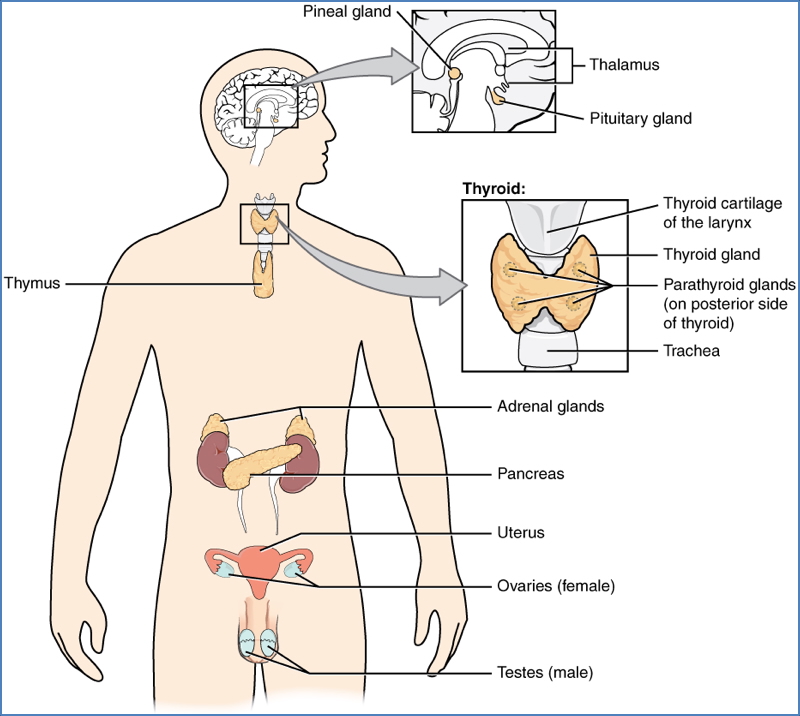
Types of Signalling
- Endocrine: Hormones travel via bloodstream to distant targets.
- Autocrine: Affect same cell type as the secreting cell.
- Paracrine: Affect nearby but different cell types.
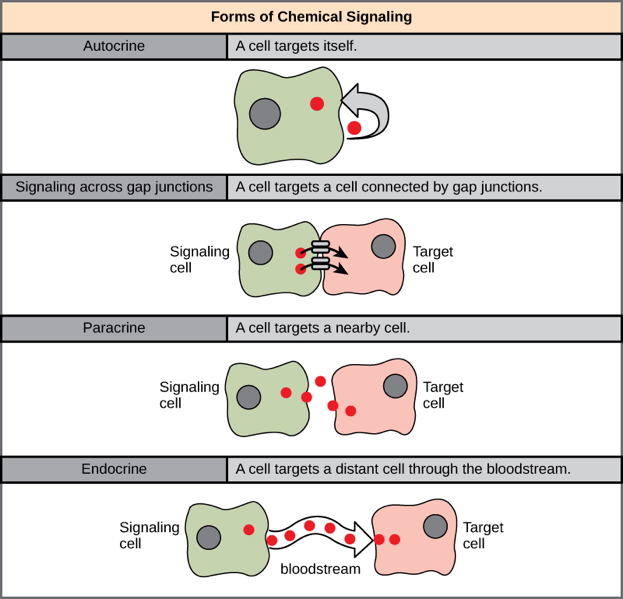
Receptor Types
Intracellular Receptors
- Bind lipid-soluble hormones (steroid and thyroid hormones, nitric oxide).
- Located in cytosol or nucleus.
- Directly regulate gene expression.

Plasma-Membrane-Bound Receptors
- Bind water-soluble hormones that cannot cross the membrane.
Ion-Channel-Linked Receptors
- Permit ion flow across membranes, generating electrical signals.
Enzyme-Linked Receptors
- Function as or associate with intracellular enzymes when activated.
G-Protein-Linked Receptors (GPCRs)
- Activate membrane-bound G-proteins.
- Trigger intracellular cascades:
- Activate enzymes (e.g. adenylyl cyclase → cyclic-AMP → Protein Kinase A).
- Regulate ion channels.
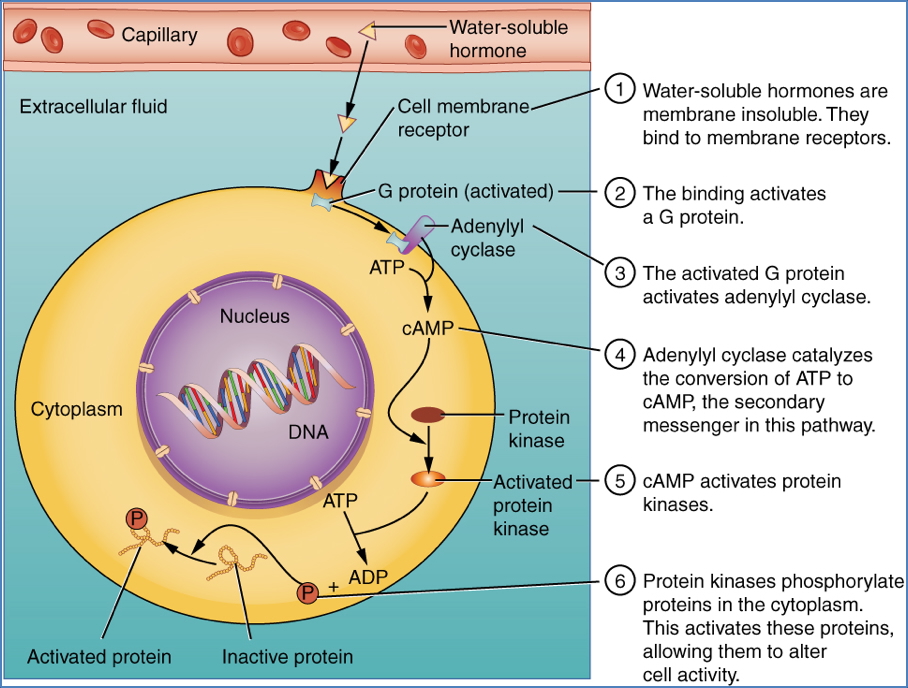
Tissue Responsiveness
Receptor Downregulation
- Reduced receptor density leads to decreased cell responsiveness.
- Achieved via receptor internalisation and recycling.
Receptor Desensitisation
- Structural changes in receptors reduce sensitivity to stimuli.
- Prevents overstimulation from rapid, repeated signals.
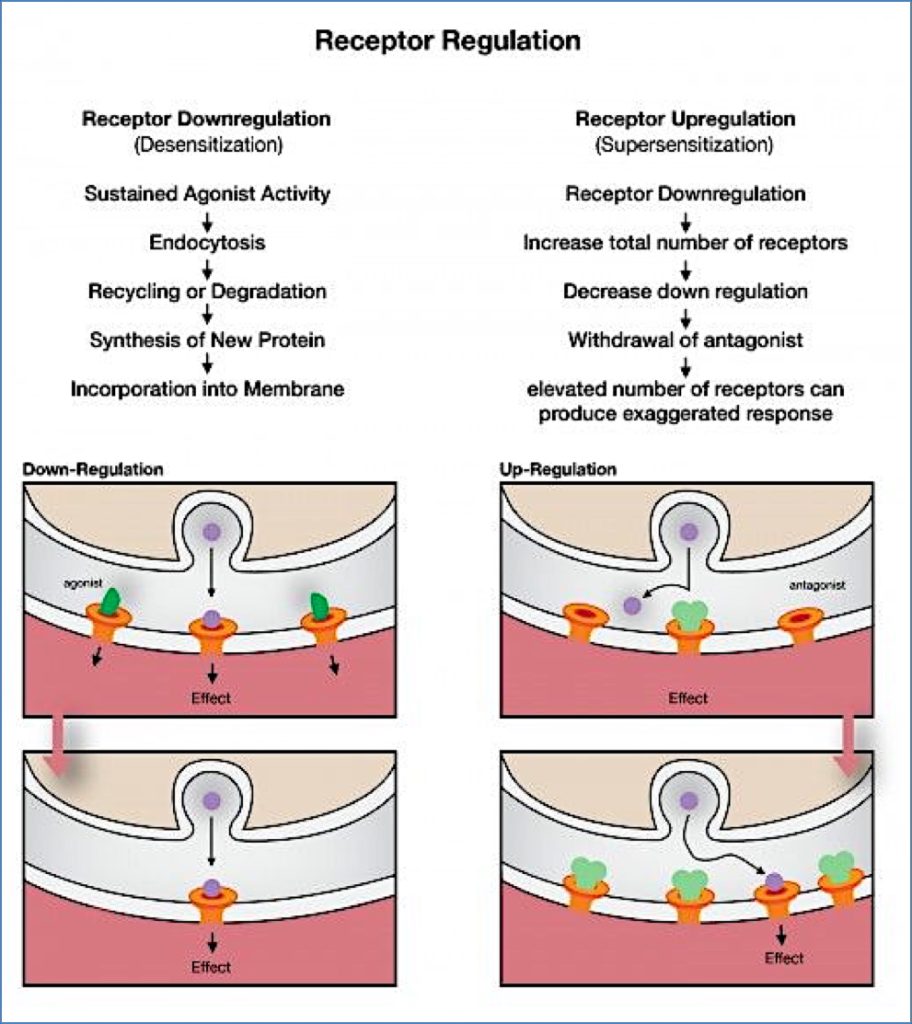
Regulation of Hormone Release
Humoral
- Blood solute concentrations stimulate gland activity.
- Example: High glucose → insulin release; low calcium → parathyroid hormone release.
Neural
- Nervous system directly stimulates endocrine glands.
- Example: Sympathetic nervous system → adrenal medulla → catecholamines.
Hormonal
- One hormone stimulates the release of another.
- Example: Hypothalamus → anterior pituitary → peripheral endocrine glands.
Feedback Mechanisms
Negative Feedback
- The most common mechanism.
- Biological response inhibits further hormone release.
- Maintains stable homeostasis.
Positive Feedback
- Rare (e.g. lactation, childbirth).
- Biological response amplifies hormone release.
- Self-limiting, ceases upon removal of the initial stimulus.
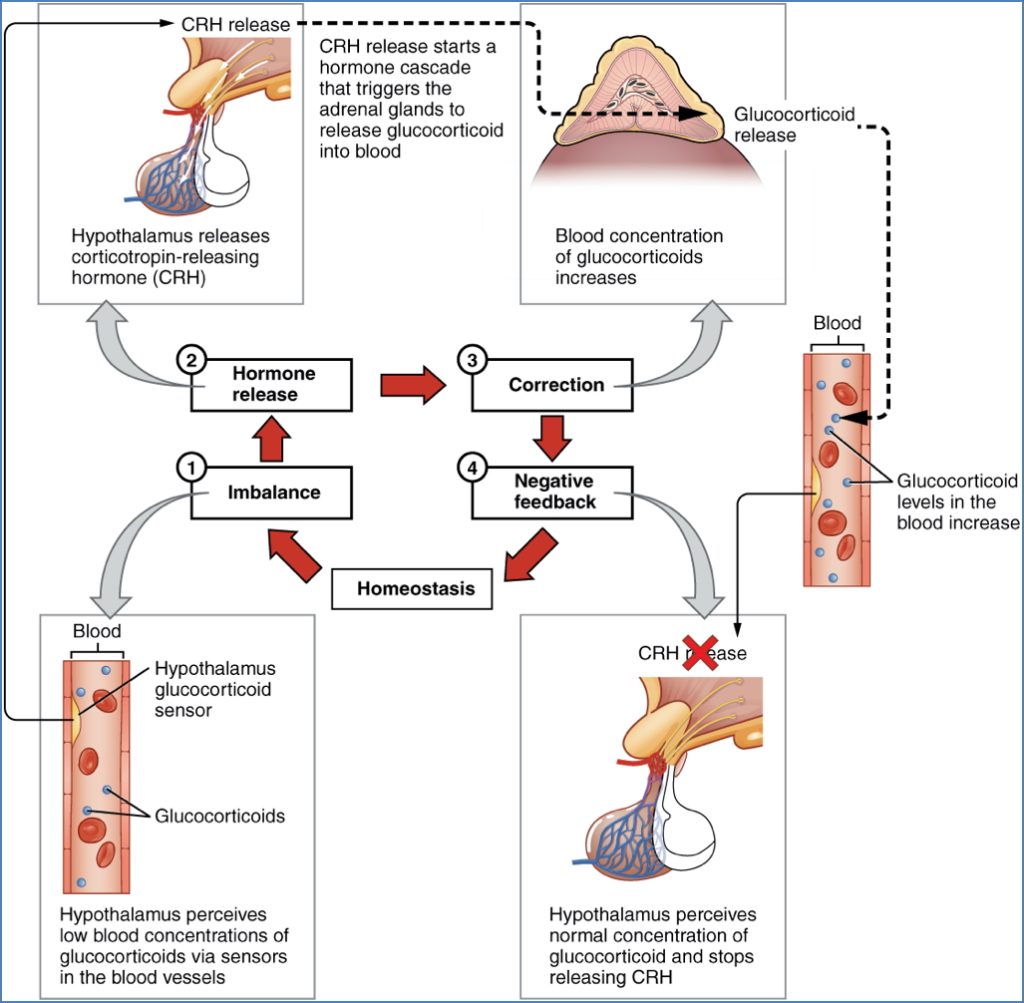
Feedback Loop Levels
- Ultra-Short Loop: Hormone feeds back on its own secretion source.
- E.g. hypothalamic hormone inhibiting hypothalamus.
- Short Loop: Pituitary hormones feed back to the hypothalamus.
- Long Loop: Peripheral gland hormones feed back to the hypothalamus.

Major Hormones and Functions
| Endocrine Gland | Hormone | Type | Function |
|---|---|---|---|
| Anterior Pituitary | GH | Protein | Growth promotion |
| Anterior Pituitary | PRL | Peptide | Milk production |
| Anterior Pituitary | TSH | Glycoprotein | Stimulates thyroid hormones |
| Anterior Pituitary | ACTH | Peptide | Stimulates adrenal cortex |
| Anterior Pituitary | FSH | Glycoprotein | Gamete production |
| Anterior Pituitary | LH | Glycoprotein | Androgen production |
| Posterior Pituitary | ADH | Peptide | Water reabsorption |
| Posterior Pituitary | Oxytocin | Peptide | Uterine contractions |
| Thyroid | T4, T3 | Amine | Metabolic rate |
| Thyroid | Calcitonin | Peptide | Lowers blood calcium |
| Parathyroid | PTH | Peptide | Raises blood calcium |
| Adrenal Cortex | Aldosterone | Steroid | Sodium retention |
| Adrenal Cortex | Cortisol | Steroid | Raises blood glucose |
| Adrenal Medulla | Epinephrine, Norepinephrine | Amine | Fight-or-flight response |
| Pineal | Melatonin | Amine | Sleep cycle regulation |
| Pancreas | Insulin | Protein | Lowers blood glucose |
| Pancreas | Glucagon | Protein | Raises blood glucose |
| Testes | Testosterone | Steroid | Male secondary sex characteristics |
| Ovaries | Oestrogen, Progesterone | Steroid | Female secondary sex characteristics, pregnancy preparation |
Summary – Hormones and Receptors
Hormones and receptors are fundamental to endocrine physiology, involving diverse classes of chemical messengers that regulate countless biological processes. Understanding hormone synthesis, receptor interactions, and feedback mechanisms is crucial for diagnosing and managing endocrine disorders. For a broader context, see our Endocrine Overview page.